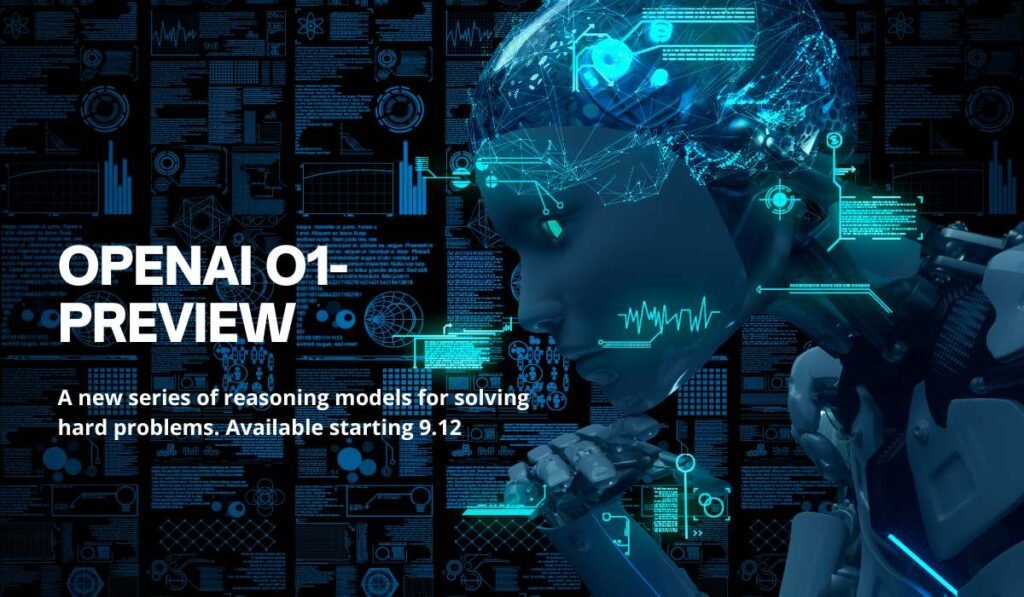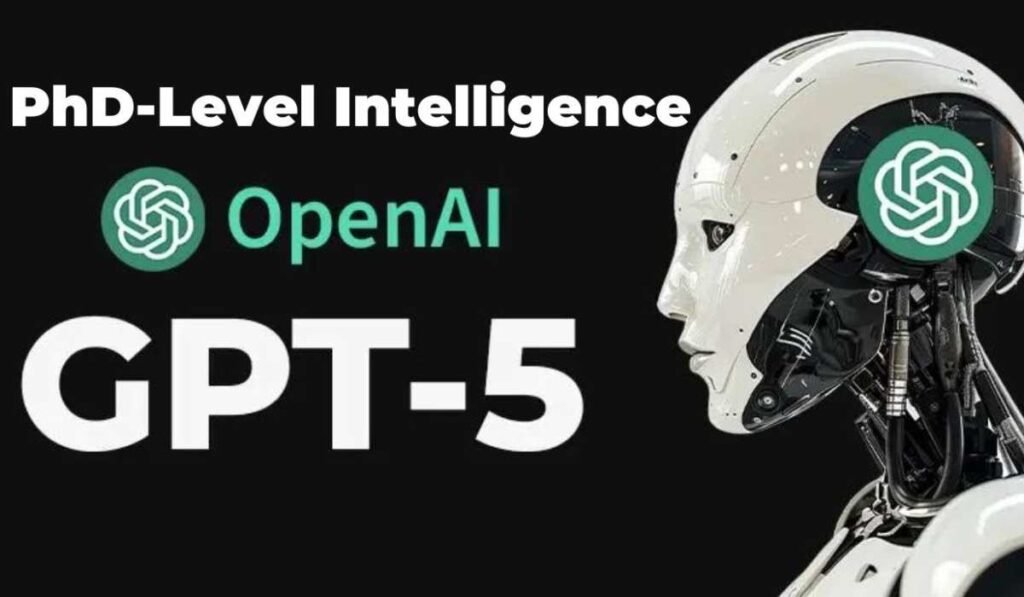In a move that has sent shockwaves through the tech community, OpenAI has unveiled its latest AI marvels: o1 and o1-mini. This unexpected “Strawberry” launch, arriving weeks earlier than anticipated, has left industry experts and enthusiasts buzzing with excitement. But what exactly are these new models, and why are they causing such a stir?
The Strawberry Revolution: Decoding o1 and o1-mini
OpenAI’s o1 series represents a quantum leap in AI reasoning capabilities. At the heart of this “Strawberry” launch are two groundbreaking models:
- o1-preview: The flagship model, designed to tackle complex reasoning tasks across science, coding, and mathematics.
- o1-mini: A streamlined version optimized for coding tasks, offering a more cost-effective solution for developers.
Fun Fact: The “Strawberry” codename isn’t just a catchy title. It’s a nod to the model’s ability to decode complex ciphers – including one that reveals “There are three R’s in strawberry”!
o1-mini: The Developer’s New Best Friend
While o1-preview is stealing the headlines, o1-mini is quietly revolutionizing the coding landscape:
- Efficiency: 80% cheaper than o1-preview
- Focus: Specialized for coding tasks
- Performance: Excels at generating and debugging complex code
For developers looking for a powerful, cost-effective AI assistant, o1-mini is a game-changer.
The Secret Sauce: Reinforcement Learning and Chain-of-Thought
What sets o1 apart is its ability to “think before it speaks.” Using a reinforcement learning approach combined with chain-of-thought reasoning, o1 can:
- Break down complex problems
- Consider multiple strategies
- Catch and correct its own errors
This mimics human problem-solving in ways previous AI models could only dream of. As one OpenAI spokesperson put it:
“We trained these models to spend more time thinking through problems before they respond, much like a person would. Through training, they learn to refine their thinking process, try different strategies, and recognize their mistakes.”
Mind-Blowing Capabilities
The o1 models aren’t just incrementally better – they’re redefining what’s possible in AI:
- Mathematics: 83% success rate on International Mathematics Olympiad qualifying exams (compared to GPT-4’s 13%)
- Coding: 89th percentile in Codeforces competitions
- Science: Outperforming PhD students in physics, chemistry, and biology
Cracking the Code: o1’s Cipher-Solving Skills
In a demonstration that left observers stunned, o1 effortlessly decoded a complex cipher that stumped GPT-4. While GPT-4 floundered, o1 methodically worked through the problem, revealing the hidden message: “There are three R’s in strawberry.”
This isn’t just a party trick – it’s a testament to o1’s advanced reasoning capabilities and potential applications in cryptography and security.
The STAR Method: Enhancing Strawberry’s Reasoning Abilities
One of the key innovations behind Strawberry (o1) is its use of the STAR (Self-Taught Reasoner) method. This technique improves AI’s reasoning capabilities through iterative learning. By starting with a small set of step-by-step examples, the AI can generalize this knowledge to a broader dataset, refining its reasoning through a process of continuous self-improvement.
This approach aligns with System 2 thinking, a concept introduced by psychologist Daniel Kahneman. It represents a slower, more deliberate form of reasoning, contrasting with the quick, intuitive decisions often made using System 1 thinking. By taking extra time to process information (10-20 seconds), Strawberry aims to deliver more thorough analysis and accurate responses.
The Hidden Chain of Thought: A Window into AI’s Mind?
One of the most intriguing aspects of o1 is its “hidden chain of thought.” OpenAI claims this feature allows them to “read the mind” of the model, potentially offering insights into its decision-making process.
While this raises exciting possibilities for AI transparency and safety, it also sparks philosophical questions about the nature of AI “thinking.” Is o1 truly reasoning, or is it an incredibly sophisticated pattern-matching system?
Integration with ChatGPT and Potential Pricing Changes
Strawberry (o1) is set to be integrated into OpenAI’s ChatGPT platform. Users will have the flexibility to select it from a list of available AI models within ChatGPT. While details are not fully confirmed, early speculation suggests that existing ChatGPT subscribers might get early access.
There are also rumors of a new tiered pricing system for Strawberry. This could potentially limit the number of messages users can send per hour, with an option for a premium service allowing faster responses and additional features. As AI becomes more integrated into business operations, such pricing strategies could help balance the high cost of development and training.
Challenges and Limitations
Despite its advanced capabilities, Strawberry isn’t without limitations:
- Text-only queries: At launch, the model will only handle text-based queries, a step back from GPT-4’s multimodal abilities.
- Slower for simple tasks: Early testers have noted that Strawberry’s slower response times for simpler queries may not always justify the wait.
- Context maintenance: The model’s ability to maintain context over longer conversations is still under evaluation.
The Controversy Surrounding “Q” and AGI
Before being named “Strawberry,” this model was known internally as “Q” or “Qar.” Its development sparked controversy within OpenAI due to concerns about its rapid progress towards Artificial General Intelligence (AGI). Some researchers worried that Q’s capabilities could lead to unforeseen risks and challenges beyond current AI models.
The Future of Strawberry and AI Development
As Strawberry (o1) prepares for launch, speculation abounds about its future capabilities:
- Multimodal functionalities: Future updates might enable the model to process images, audio, and video alongside text.
- Integration with other projects: Potential combinations with other OpenAI initiatives, like “Orion,” could create even more powerful AI systems.
- Evolving pricing models: As AI capabilities grow, we may see new pricing structures to balance accessibility with development costs.
The Cost of Innovation
Developing and training AI models like Strawberry is an expensive undertaking. For context, training GPT-4 reportedly cost over $100 million. As models become increasingly complex, these costs are expected to skyrocket, raising questions about the sustainability of such projects and the return on investment for companies like OpenAI.
A New Era in AI
Strawberry (o1) marks a significant milestone in OpenAI’s journey towards smarter, more capable AI systems. With its focus on reasoning and problem-solving, it promises to offer a new level of precision in handling complex tasks. While it remains to be seen whether it will live up to the hype, Strawberry’s potential to reshape the AI landscape is undeniable.
As we stand on the brink of this new era in artificial intelligence, one thing is clear: The world of AI just got a whole lot juicier, and we can’t wait to see what fruits this Strawberry revolution will bear. Are you ready to take a bite of the future?
o1 and o1-mini are the latest AI models from OpenAI, launched as part of the 'Strawberry' initiative. o1-preview is designed for complex reasoning tasks across various fields, while o1-mini is a cost-effective version optimized for coding tasks.
o1-mini is 80% cheaper than o1-preview and excels at generating and debugging complex code, making it a powerful and economical AI assistant for developers.
o1 uses a reinforcement learning approach combined with chain-of-thought reasoning, enabling it to break down complex problems, consider multiple strategies, and correct its own errors, mimicking human-like problem-solving.
The STAR (Self-Taught Reasoner) method enhances o1's reasoning by allowing it to learn from small sets of examples and generalize that knowledge, which improves its reasoning capabilities through iterative learning.
o1 has shown an 83% success rate on International Mathematics Olympiad qualifying exams and ranks in the 89th percentile in Codeforces competitions, significantly outperforming previous models.
o1 demonstrated advanced reasoning by decoding a complex cipher that stumped GPT-4, showcasing its capabilities in cryptography and security applications.
Yes, o1 is set to be integrated into the ChatGPT platform, allowing users to select it from a list of available AI models. Early access may be provided to existing ChatGPT subscribers.
At launch, o1 will only handle text-based queries, may respond slower to simple tasks, and its ability to maintain context in longer conversations is still being evaluated.
The development of 'Q' raised concerns about its rapid advancement towards Artificial General Intelligence (AGI), with some researchers worried about the potential risks and challenges it could pose.
Future updates for Strawberry may include multimodal functionalities, allowing the model to process images, audio, and video, as well as potential integrations with other OpenAI projects to enhance capabilities.





